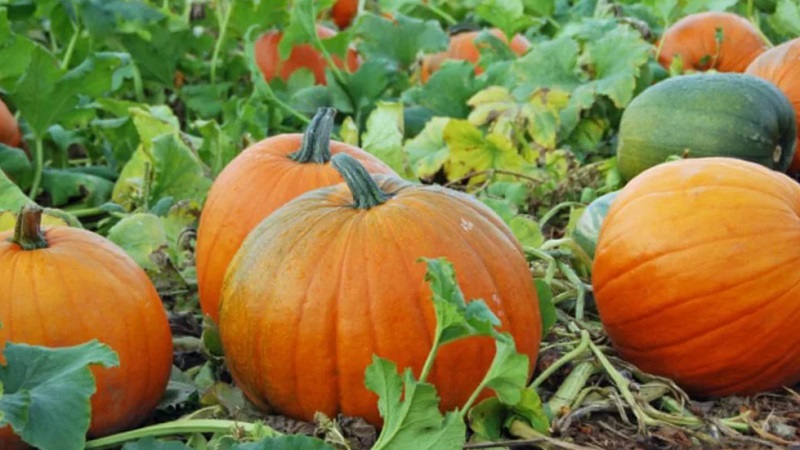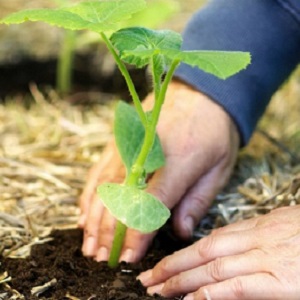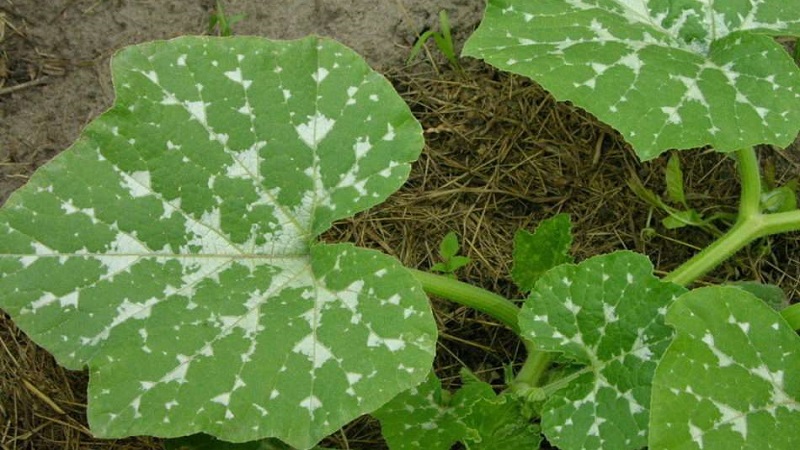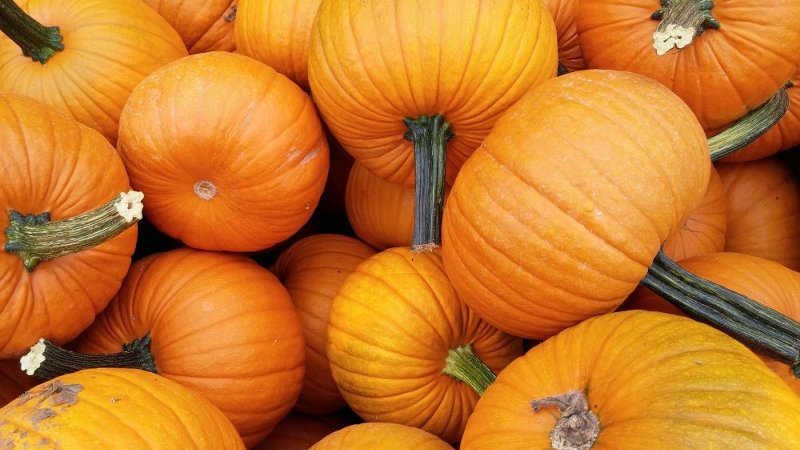How to get a good pumpkin crop: growing and care in the open field, recommendations of experienced gardeners
The first to grow pumpkin were Mexican Indians many centuries ago. They prepared various dishes from the bright fruits, made dishes and even rugs from pumpkin peels. The plant was brought to Europe by Spanish sailors about 500 years ago. Europeans liked the new product. Today, a healthy vegetable is cultivated on all continents except Antarctica.
In our country, pumpkin is loved by gardeners and gardeners. It is grown in all regions of the country, except for the Far North. The bright orange fruits are tasty and healthy and keep well in winter. Ornamental crop varieties adorn an unsightly fence in a country house or garden plot. In the article we will talk about growing and caring for pumpkin in the open field.
The content of the article
- Pumpkin varieties and their features
- Growing by seeds and seedlings
- How and when to grow pumpkin
- Pumpkin predecessors
- Care plan by month
- Features of cultivation in different regions of Russia
- Timing for planting pumpkin
- Tips and tricks from experienced gardeners
- Conclusion
Pumpkin varieties and their features
Over the years of cultivation, dozens of varieties have been bred. Depending on the softness of the bark, the size of the pumpkins and the taste of the pulp, they are divided into 3 types:
- Hardy... Such pumpkins are distinguished by a hard, stiff bark. The fruits are medium-sized and ripen earlier than others. The crop is ready for harvest in August - early September. Vegetables are well stored, they have the most delicious seeds.
- Large-fruited... These varieties are chosen for growing in personal plots because of the high yield and sugar content of the fruits. The sugar content in some varieties reaches 15% (more than in watermelon).
- Muscat... Delicious and vitamin-rich. A distinctive feature of nutmeg varieties is a pentahedral stalk and elongated pear-shaped fruits. Such pumpkins ripen later than everyone else and are very thermophilic, therefore in the Urals and Siberia they are cultivated through seedlings.
Interesting fact! The Irish and Scots were the first to carve lanterns from vegetables, for this they used rutabagas and turnips. Later, the tradition took root in the USA, where they began to make lamps just from pumpkin.
Growing by seeds and seedlings
How to grow pumpkin fruits? The choice of cultivation method depends on the region of residence. In Ukraine and in the southern regions of our country, a vegetable is planted by seeds immediately in open ground, in the Urals and in Siberia grown in seedlings. In the latter case, the ripening period is reduced and the harvest is harvested before the end of the season.
Growing from seeds
Paradoxically, the richest harvest does not grow from fresh seeds, but from old ones. Therefore, the material is artificially aged by heating and soaking. To do this, it is wrapped in a dark-colored cloth and brought out into the sun on a hot day (for 5-6 hours).
If the warm weather has not yet settled, then an oven is used to warm up. The seeds are laid out on a baking sheet, placed in the oven and gradually raised to + 40 ° C. After 3-4 hours, the seeds are removed and cooled.
After warming up, the planting material is soaked in water at room temperature or in an ash solution (1 tsp ash per 200 ml of hot boiled water).The seeds wrapped in cloth are immersed in liquid for 12 hours, then sent to the refrigerator. So they will be hardened and in the future the plants will more easily tolerate temperature changes.
Seedling growing
Pumpkin is a southern culture accustomed to warmth and light. In the Urals and Siberia, the summer is short and does not indulge in hot days. In such conditions, the best way to grow is through seedlings. In this case, the process of fruit ripening is completed before the end of the summer season.

Sowing for seedlings is carried out about a month before diving into open ground. The culture is cultivated in a polycarbonate greenhouse or under a film cover. The soil in the building must be warmed up to +15 ° C.
How and when to grow pumpkin
Pumpkin is a surprisingly unpretentious plant that does not require the use of complex agricultural techniques. However, this culture also has its own preferences and secrets to increase yields.
Seed preparation
The key to obtaining a stable harvest is careful selection and stage-by-stage preparation of seed material. This is done in several stages:
- Visual inspection. All specimens showing signs of disease or damage, as well as thin and small seeds are discarded.
- Germination test. The selected grains are placed in a saline solution. The floating seeds are empty, they will not sprout.
- Disinfection. An important step that protects tender young shoots from diseases and pests. A solution of potassium permanganate has good disinfecting properties. The seeds are kept in it for 30 minutes. Then washed with clean water and dried.
- Germination. Accelerates the emergence of seedlings. Planting material is germinated in damp cloth or sawdust.
Important! The cloth or sawdust should be damp, not wet. Drying of seeds is not allowed.
The first shoots appear in a few days. After completing all stages of preparation, they begin to plant.
Optimum temperature for seedlings or seeds
To obtain strong, healthy seedlings, they provide the correct temperature regime. Until the emergence of seedlings, containers with seeds planted in them are kept warm. As a culture grows, it often stretches a lot.
To prevent this, the pots with seedlings are moved to a cool place with a temperature of + 15 ... + 18 ° C during the day and + 12 ... + 13 ° C at night. Plants are kept in the cold for about 7-10 days. Then the temperature is raised again.
Attention! Pumpkin loves warmth. When the temperature drops to +14 ° C, the growth of the bushes stops.
Plants are ready for planting in the garden when 2-3 true leaves have formed on them.
Soil preparation
They prepare soil for seedlings on their own or buy special mixtures for pumpkin crops. The optimal soil for growing seedlings is a mixture of peat, rotted sawdust and humus (2: 1: 1).
The prepared soil is filled with containers by 2/3 of the volume. The earth is moistened with water at room temperature and sowing is started. Seeds are planted to a depth of 3-4 cm.
Advice! Pumpkin seedlings do not tolerate picking. Therefore, for growing pumpkin seedlings, individual containers with a volume of at least 0.5 liters are used.
Preparing and planting pumpkin in open ground

How many seedlings grow at home? On average, 3-4 weeks after the emergence of seedlings, the culture is transplanted to a permanent place. A plot for a pumpkin patch is prepared in the fall. The earth is dug up and fertilized. Immediately before planting, the soil is loosened and weeds are removed.
They start sowing or picking on the beds when the soil warms up to + 15 ° C and the threat of frost has passed. Pits are made 4-5 cm deep for seeds or the size of a container for seedlings. After planting, the bed is watered with warm, settled water.
Planting pumpkin care
The first few days after planting, the crop is protected from cold and direct sunlight. To do this, use newspapers or special covering material.
Lighting requirements
Pumpkin bushes love sunlight.For cultivation, choose an open place, illuminated by the sun from morning to evening. In the shade, the culture grows worse and bears fruit, often gets sick. If the site is small, then it is permissible to plant a pumpkin in partial shade.
Diseases and pests

There are not so many diseases and pests that threaten the pumpkin crop. Plantings are affected by root and white rot, powdery mildew, bacteriosis.
Root rot
The disease affects the root system of plants. The stems darken, the growth of the bush slows down or stops completely, the lower leaves dry and fall off. The reasons are sudden changes in temperature and cold watering. When the first signs of the disease are found, earth is poured onto the pumpkin lashes. This is how additional roots are formed and the bush receives the necessary nutrition.
White rot
The leaves and stems of the bushes suffer, a white bloom appears on the foliage and lashes. Rot-affected tissues become soft and slimy to the touch. At the first sign of the disease, the affected parts of the plants are cut off. The bushes are treated with copper sulfate (30 g per 3 l of water), paying special attention to the places of the cuts.
Powdery mildew
Powdery mildew is recognized by the white bloom that covers the leaves. The affected foliage shrivels and dies off. Treat the disease with sulfur. Sick bushes are sprayed with an 80% solution of colloidal sulfur or treated with a ground substance.
Bacteriosis
The development of bacteriosis is evidenced by the appearance of brown spots on the leaves. Affected tissues dry and die off. Compliance with crop rotation rules helps prevent the problem. If signs of infection do appear, then the pumpkin is sprayed with a 1% Bordeaux mixture. After a few days, the procedure is repeated.
Of the pests for pumpkin beds, melon aphids and spider mites are dangerous.
Melon aphid
You can find the insect on the underside of the leaves. In the future, aphids settle on ovaries and flowers. The pest feeds on the juices of the bushes. Affected foliage curls, dries and falls off. The growth of culture stops.
To combat melon aphids, the bushes are sprayed with chemicals (for example, "Karbofos", "Commander", "Iskra", "Fury"). From folk methods, garlic infusion is effective.
Spider mite
The mite braids the pumpkin bushes with thin light cobwebs, leaving many white puncture points on the leaves. Affected leaves curl, turn yellow and dry out. If you do not fight the pest, the whole bush will die.
In the initial stages of damage, spraying with a solution of laundry soap and onion peels helps. All diseased leaves are cut off and burned. In case of significant damage, special poisons against ticks are used - acaricides.
Lash formation and pollination
The homeland of the vegetable is the tropics, so the greens near the bushes grow more intensively than the fruits. The formation of bushes allows the formation and maturation of pumpkins to accelerate.
Plucking starts from the main stem... The growth point is removed after the formation of 2–5 ovaries on the lash. The whip is pinched 5-7 leaves after the last fruit. Do the same with side shoots.
After the fruits have formed, all the leaves shading them are cut off.
Particular attention is paid to pollination of flowers. If the summer is rainy and there are few insects, female flowers are pollinated by hand. It happens that there are no men at all. In this case, the vegetable is pollinated with other pumpkin crops: for example, squash, or squash.
Watering and feeding
Caring for the beds consists in regularly moistening and loosening the soil, removing weeds, and applying fertilizers.
Pumpkin plantings are watered infrequently, but abundantly. Use sun-warmed, settled water. Moistening the soil with cold water leads to decay of the root system of the bushes and the development of diseases. Watered under the root, avoiding the ingress of liquid on the leaves and flowers. Pumpkin especially needs moisture during flowering and ovary formation. Stop watering 2-3 weeks before harvesting.
Large fruits cannot be grown in poor soil.Plants need a lot of nutrients to form and fill them. Fertilizers are applied 2-3 times per season. The first time the culture is fed at the seedling stage, the second - a week after planting in the ground, the third - after another 3-4 weeks. As a top dressing, ready-made complex fertilizers are used (strictly in accordance with the instructions). Wood ash and chicken droppings are also used.
Loosening and thinning
The developed root system of the bushes needs oxygen. Therefore, the next day after watering or rain, the soil is loosened, while removing the weeds. Do this up to the closure of the green mass.
If there are a lot of leaves and they are large, the bushes are thinned out: the shading of the ovaries has a bad effect on the yield.
Harvesting and storage

The rich color of pumpkins, dried whips and leaves indicate the time of harvest. The fruits are removed from the garden in dry warm weather, without waiting for the onset of cold weather. Frozen vegetables are poorly stored and are only suitable for immediate consumption.
Pumpkins are harvested carefully, avoiding blows and mechanical damage. Leave a long stalk (about 10 cm). If the harvest was carried out in rainy weather, then the pumpkins are first dried in a closed dry room and only then sent to winter storage.
The fruits are characterized by long-term keeping quality, while the pulp does not lose its taste. Some hard-bore and large-fruited varieties are left until the next harvest. Butternut squash doesn't last as long.
The crop is kept in special storage facilities, cellars and basements at a temperature of + 1 ... + 5 ° C.
Pumpkin predecessors
The place for the pumpkin beds is chosen in accordance with the rules of crop rotation. Favorable preceding crops - potatoes, cabbage, tomatoes, legumes, onions.
Advice! In early spring, plant early ripening crops: radishes, lettuce or herbs on a free bed prepared for pumpkin.
Unsuitable predecessors for a vegetable are related crops (zucchini, cucumbers, melons, squash).
Care plan by month
After the emergence of seedlings or planting seedlings in open ground in June, caring for the planting of pumpkin consists in regular watering, fertilizing, loosening the soil and removing weeds.
In June, while the plants are still small, deep soil moisture is not required. After watering, the soil is loosened, providing oxygen to the roots. A few days after planting, fertilizers are applied (nitrophosphate, ash, mullein or rotted manure).
By July, pumpkin bushes grow, forming a powerful root system. During this period, the earth is loosened carefully and shallowly so as not to damage the roots. Water abundantly, as large leaves evaporate a lot of moisture. Continue feeding.
In August, watering is reduced, and at the end of the month it is completely stopped. Fertilizers are no longer applied. During this period, the fruits accumulate sugars and gain sweetness.
Features of cultivation in different regions of Russia
The unpretentious pumpkin is cultivated throughout Russia, except for the Far North. In each region, crop cultivation has its own characteristics.

In Siberia and the Urals
In regions with cool and short summers, predominantly early and mid-season varieties are grown. When choosing, pay attention to the resistance of the variety to temperature changes.
In Siberia and the Urals, pumpkin is cultivated in seedlings, since the threat of return frosts persists even in June.
In outskirts of Moscow
Here, early-maturing varieties are planted immediately in open ground. Mid-season and late - through seedlings.
Timing for planting pumpkin
When determining the timing of growing crops, they are guided by the climatic conditions of a particular region. It should be borne in mind that southern beauty does not tolerate cold weather... Landing in open ground is carried out only after warm weather is established.
In Belarus, Ukraine, and southern Russia, the dates fall in the second half of May.
In the Leningrad Region and Moscow Region - at the beginning of June.
In the Urals and Siberia - in mid-June.
Tips and tricks from experienced gardeners
When cultivating pumpkin, the following recommendations from experienced farmers will help:
- when growing in areas with cool and short summers, use warm beds;
- sprinkle the side shoots with earth to form additional roots;
- follow the rules of crop rotation;
- place the pumpkin in sunny, spacious areas;
- do not let the fruit come into contact with the ground: this can cause damage. Place boards or other suitable material under the pumpkins.
Conclusion
Orange beauty pumpkin is a dietary product that does not require special care when grown. The key to obtaining a rich harvest is the competent preparation of seeds and soil, the correct choice of the site, timely feeding and watering of the crop. Carefully picked pumpkins will remain in a cool, dry place until spring without losing flavor.